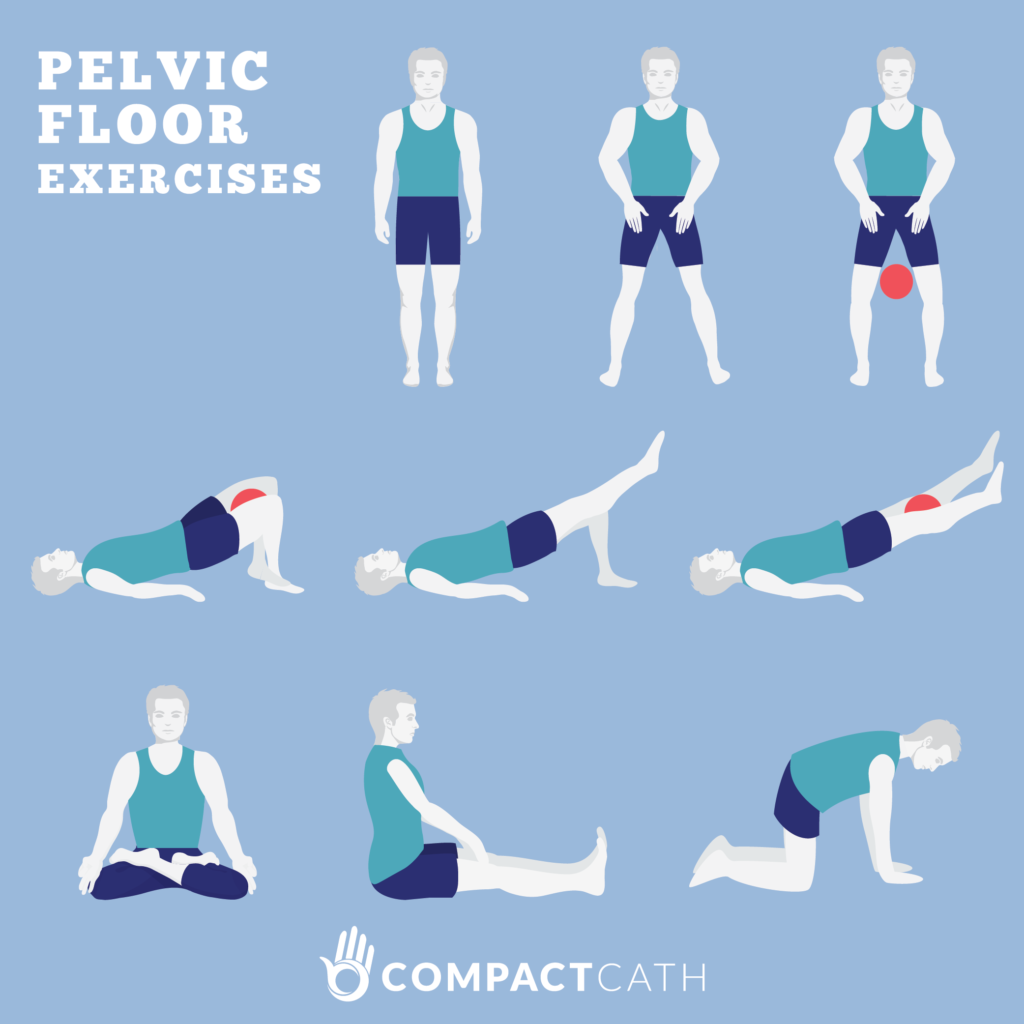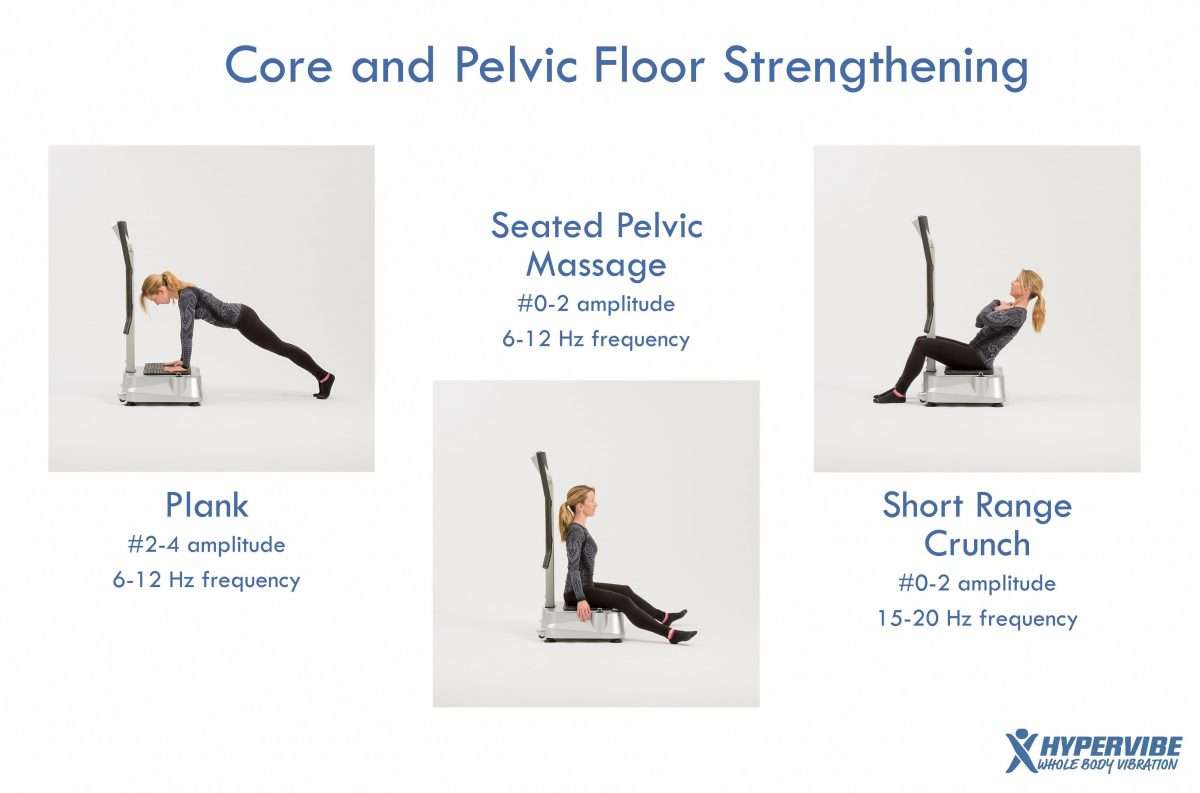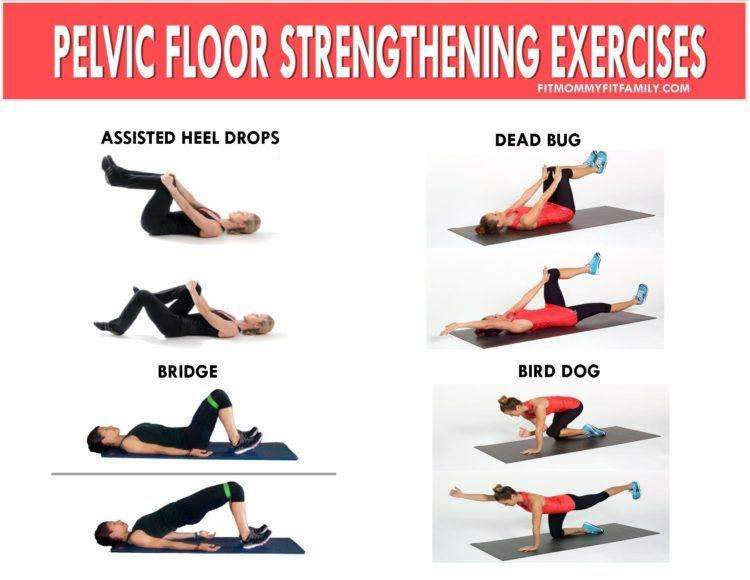Pelvic Floor Training Programme
The first step is to correctly identify the muscles. Sit comfortably your thighs, buttocks and tummy muscles should be relaxed. Lift and squeeze inside as if you are trying to hold back urine, or wind from the back passage.
- If you are unable to feel a definite squeeze and lift action of your pelvic floor, dont worry. Even people with very weak muscles can be taught these exercises.
- If you feel unsure whether you have identified the correct muscles, try to stop your flow when passing urine, then restart it. Only do this to identify the correct muscles to use this is a test, NOT an exercise.
- If you are unable to feel a definite tighten and lift action in your pelvic floor muscles you should seek professional advice.
Urinary Incontinence: Kegel Exercises For Pelvic Muscles
Kegel exercises are one of the best natural ways to control urinary incontinence.
These simple moves can help many women and men, regardless of your age or what’s causing your problem. They strengthen your pelvic floor muscles, which support your bladder. When these muscles are weak, you’re more likely to have leaks.
Here’s what you need to know:
Who benefits from Kegels? Anyone, at any age, who suffers urinary incontinence or leaks urine. While the exercise mainly helps those with stress urinary incontinence, it can also work if you have urge incontinence from overactive bladder. This causes a sudden urge to pee. You might not always make it to the bathroom. Men can do Kegel exercises to control urinary incontinence that can happen after prostate surgery.
How do you do them? Pretend you’re trying to stop the flow of pee. Pull in and squeeze those muscles. Hold the squeeze for about 10 seconds, then rest for 10 seconds. Try for three or four sets of 10 contractions every day.
How do Kegels help? They strengthen the muscles that help control the urethra. When these muscles are weak, you can’t control the flow as well.
When will I see results? It takes time to build your biceps, so it takes time to strengthen pelvic floor muscles, too. Give it 3 to 6 weeks. Do them daily.
Are there other benefits to Kegels? Yes. They can also help you out in the bedroom. When your pelvic floor muscles are in shape, they’ll contract more strongly during an orgasm.
Why Does Pregnancy Cause Incontinence
During pregnancy, your body goes through a lot of physical changes. As your uterus stretches to hold the growing baby, a few things happen. Your bladder can be squished by the expanding baby, making your bladder hold less than before. You might experience an increased urgency to pee during pregnancy because your bladder cannot hold as much as before. This might become even more challenging towards the end of pregnancy when the baby is at its largest.
Another reason for incontinence during pregnancy is the weakening of your pelvic floor muscles. These muscles are the support structures for all of the organs in your pelvis. During pregnancy, they can be stretched and weakened as your uterus expands.
Don’t Miss: Over The Counter Bladder Medication
Supta Baddha Konasana Or Reclining Bound Angle Pose
This yoga pose focuses on your groin and pelvic region and works your inner thighs as well as hips, giving it a complete stretch. With stronger inner thighs, you can stabilize your pelvic floor better. Because you boost flexibility, you can sense and use your pelvic floor muscles much more deeply than before.13 Follow these steps to perform this asana14:
- Lie down on your back, knees bent, and feet together.
- Breathe in relaxing the pelvic floor. Feel your hip and abdominal muscle relax. Allow your knees to drop open at the sides of your body.
- Breathe out as you bring your knees back to the start position, pulling your abdominal muscle in and lifting your pelvic floor. Accentuate that contraction of your muscles at the tail end of your exhalation.
You May Like: Where Is My Bladder Located Female
Why Do I Leak Urine During My Workouts

Bladder leakage during your workout is due to a condition called Stress Urinary Incontinence . SUI is incontinence that occurs when you have a weak pelvic floor or sphincter muscle, and increased pressure is placed on your bladder. This can happen with things like sneezing, coughing, and, yes, certain forms of working out.
SUI occurs commonly with childbirth, but other conditions can also contribute to the condition. Chronic coughing, surgical procedures, menopause, and obesity can also contribute to SUI.
Read Also: Does Bladder Cancer Pain Come And Go
Don’t Miss: Does A Bladder Infection Cause Incontinence
Avoid High Impact Exercise: It Can Make Leakage Worse
If youre looking at losing weight or exercising to help your urinary incontinence, be aware that high impact exercise can actually make things worse by putting pressure on the pelvic floor muscles. Even sit-ups may prove problematic. So skip the aerobics classes and trade in your running shoes for some yoga or pilates. This will help you build core strength, stretch your body, and get a good workout without taking a toll on your pelvic floor muscles. Plus, as we saw, yoga has some asanas that are actually beneficial for the pelvic region.16
References
Adjust Your Diet And Beverage Intake
Regardless of weight, you can also adjust what you eat and when you eat it. The following foods and beverages can irritate the bladder, causing involuntary urine leakage. If you notice patterns in your food and drink consumption that correspond with leaks, avoiding those foods will help avoid leaks.
Foods to avoid include:
- Acidic foods, like citrus fruits and tomatoes
Beverages to avoid include:
- Caffeine
- Carbonated beverages
If youre not ready to abstain completely from these ingredients, be more mindful when and where you consume them. Drinking carbonated beverages closer to bedtime might be something you avoid, since it could result in bedwetting or frequent waking up to use the bathroom .
Recommended Reading: Cream Of Tartar For Bladder Infection
Who Can Benefit From Pelvic Floor Exercises
Both men and women can benefit from pelvic floor exercises. If your incontinence is caused by weak pelvic floor muscles, experts recommend that you try this method as a safe, first option. These exercises are most commonly practised by those with , who leak urine when pressure is put on the bladder. They are also useful for those with a strong, sudden urge to urinate just before losing a large amount of urine, which is also known as . Individuals with , which is a mix of stress and urge incontinence, are also advised to try the exercises. Pelvic floor exercises are, however, less helpful for those who experience severe urine leakage or have no bladder control. They should also not be relied upon by those who unexpectedly leak small amounts of urine due to a full bladder .
One of the reasons why urologists and professionals are advocates of pelvic floor muscle exercises is that they have no serious adverse effects. Evidence over the years has shown the exercises to be hugely successful in reducing and even fully treating incontinence. A prospective randomized trial was conducted with 71 women seen for treatment of in two referral clinics. Forty-four percent of enrollees in the study had a 50% improvement in the number of daily incontinence episodes. For all individuals, the mean number of daily incontinence episodes decreased from 2.6 to 1.7 for genuine stress incontinence and from 3.0 to 1.7 for mixed incontinence.
How Do I Find My Pelvic Floor Muscles
Your pelvic floor muscles are a group of muscles that form a small sling or hammock that runs between your pubic bone in the front of your body to your tailbone at the back.
Finding your pelvic floor muscles is pretty simple. Try stopping the flow of your urine when you are sitting on the toilet. Only do this until you learn how it feels . You can also insert a finger into your vagina and squeeze the muscles in your vagina around it. You should feel pressure around your finger. The muscles you feel lifting inside of you when you are trying these activities are the same ones you strengthen during Kegel exercises.
Also Check: Different Types Of Bladder Infections
Exercises To Help With Incontinence
Tags
People with Pulmonary Fibrosis can also experience incontinence or other kinds of bladder and bowel dysfunction. As a specialist explained in her interview with PF NOW!, everyone has a breathing diaphragm and a pelvic diaphragm, and the two have to work together. If the two diaphragms are not coordinated, then symptoms of incontinence can occur.
People with PF might not have coordination between their breathing and pelvic diaphragms for a variety of reasons. Many people with PF do not or cannot get much exercise, which causes muscles to atrophy and become weak. People with PF also cough often, which causes a lot of banging on the pelvic floor muscles, and also weakens the muscles. Further, people with PF might be taking short or shallow breaths, which is stressful on the body.
Fortunately, there are several simple exercises you can do from home to help prevent or improve incontinence. Here are a few movements you can do to help identify and activate your pelvic floor muscles. They can also help prevent other challenges, such as bladder or rectal prolapse .
Drink Plenty Of Water
Drink 6 to 8 glasses of fluid a day unless your doctor advises you otherwise.
Many people with urinary incontinence avoid drinking fluids, as they feel it causes more problems. However, limiting your fluid intake makes incontinence worse, because it reduces your bladder’s capacity.
Not drinking enough fluid can also cause constipation or make it worse.
Find out which are the healthiest drinks.
Also Check: Signs Of Uti Or Bladder Infection
Can Physical Therapists Help With Kegels
Absolutely. Pelvic floor physical therapists can teach you how to do kegels in a correct and more effective way. They use different techniques for monitoring and provide feedback. Its like having a personal trainer at the gym. You can find instructions for kegels online and do them on your own, but if you have someone who teaches you how to do them, and gives you professional feedback, it helps you do the exercises correctly and more effectively. Its been proven in research studies that its more effective than doing them on your own. At the University of Chicago Medicine, we have a very good physical therapy team that specializes in pelvic floor issues.
Read Also: Where Is Your Bladder Woman
Plan Ahead: Scope Out Bathrooms Before You Leave Home

If you have urinary incontinence, its a good idea to know where the bathrooms are located at unfamiliar destinations, such as restaurants, museums, shopping centers, and parks. Try finding a map or directory ahead of time online. One useful Procter & Gamble app, Sit or Squat: Restrooms Near Me, can help you find a clean public restroom near your current location. It can be downloaded for free from the App Store or Google Play.
You May Like: Antibiotics For Uti Or Bladder Infection
Perform Pelvic Floor Exercises
Your pelvic floor is a sheet of muscles that supports your bladder and bowel. If it weakens, you may experience urine leakage when coughing, laughing, or sneezing, a need to go to the bathroom frequently, or an urgency to get to the bathroom and leaking on the way.
Pelvic floor exercises, which are sometimes known as Kegel exercises, aim to strengthen your muscles to support your organs, improve bladder control, and prevent urine leakage.
The University of Otago in New Zealand led a that compared the exercises with no treatment. They found that people who practiced Kegels were 2.517 times more likely to fully recover from urinary incontinence.
Another study by the Université de Montréal in Canada discovered that adding dance to a pelvic floor muscle program was a recipe for success.
Practicing the combined program on a video game console led to a decrease in daily urine leakage in women over the age of 65 years, compared with the pelvic muscle floor program alone.
The team revealed that the fun dance element motivated women to show up to the physiotherapy program each week, which improved their practice frequency and therefore strengthened their pelvic floor muscles further.
Dancing also allowed the women to apply pelvic floor muscle exercises which are traditionally performed while static to movement.
Dr Susie Gronski Pt Dpt
Specializing in mens pelvic and sexual health, Susie Gronski, PT, DPT is a Medical Advisor and Writer for Aeroflow Urology and a licensed doctor of physical therapy, certified pelvic rehabilitation practitioner, Michigan-trained sex counselor and educator, international teacher, and author of Pelvic Pain The Ultimate Cock Block: A No-bullshit Guide for Men Navigating Through Pelvic Pain. Learn more at www.drsusieg.com
Information provided on the Aeroflow Urology blog is not intended as a substitute to medical advice or care from a healthcare professional. Aeroflow recommends consulting your healthcare provider if you are experiencing medical issues relating to incontinence.
You May Like: Bladder Spasms After Prostate Surgery
What Causes Postpartum Bladder Leakage
There are multiple types of urinary incontinence that can occur postpartum, but the most common is called Stress Incontinence SI can occur regardless of whether you gave birth vaginally or via c-section, however, it is more common in women who deliver vaginally.
Think of your bladder as a valve that opens when you decide to pee and stays closed when youre not peeing. When youre pregnant, your uterus expands to hold a tiny human, and puts a great deal of pressure on that valve. Additionally, the added pressure on your pelvic floor muscles cause them to weaken, which further increases the likelihood of some amount of bladder leakage.
Then add childbirth and you have a recipe for postpartum bladder leakage.
Also Check: Natural Remedies For Bladder Infection Apple Cider Vinegar
Utkatasana Or Chair Pose
The utkatasana can be adapted to help build an awareness of the pelvic region and the muscles that control urine flow.15
- Begin in tadasana or mountain pose, standing with your feet together.
- Align your head, pelvis, and torso so that the centers of your head and pelvis line up.
- Inhale raising your arms up, palms facing each other until they are overhead.
- Exhale, keep your arms extended as your interlink your fingers and invert them to face the ceiling. Stretch your arms a little more. Continue to breathe. Extend a little more with each exhalation.
- As you exhale, bend your legs deeply, with your inner thighs, knees, and feet still firmly glued to each other and heels flat on the ground.
- Let your lower spine open and rotate your pelvis back. Stop moving the pelvis as soon as you feel a contraction in your pelvic floor muscles.
- Now focus on the lower abdominal muscles that are just above your pubic bone and gently draw them in.
- Next, contract your pelvic floor muscles as you do in a Kegel, to stop the imaginary urine flow.
- Hold for multiple breaths and then release. Return to the original position.
You May Like: Botox For Bladder Control Reviews
Can I Still Exercise With Sui
As you can see, there are permanent solutions for urine leaks during exercise. Once you see a urologist and start taking action, you can free yourself from strategies that just hide the problem, like wearing dark clothes and using absorbent products. Youll no longer have to plan your workout around bathroom breaks, and youll have more beverage options when you hydrate.
Youll also have more choices for exercise, since you wont be limited to low-impact workouts that put less pressure on your bladder. Instead, youll be able to pick other activities, try new ones, or mix and match for variety.
Dont let incontinence keep you from staying fit. Many people stop their exercise program because of urine leaks, but physical activity is an essential part of staying healthy. Avoiding exercise can raise your risk for other health problems, like obesity and diabetes.
Remember, we are always here to answer your questions and suggest solutions. Just give us a call.
The Squeeze & Release
The squeeze and release is your secret weapon towards getting your pelvic muscles to respond quickly. This can be very helpful for stopping leaks in pinch!To squeeze and release:
- Sit or stand in a comfortable position and think of the muscles used to control your urine flow.
- Squeeze your pelvic muscles as quickly as possible and rapidly release them with no attempt to hold the position.
- Take a rest for 5 to 10 seconds.
- Repeat contracting your pelvic muscles for 10 to 20 reps.
- Perform this exercise 3 times throughout the day.
Recommended Reading: What Can You Do For A Bladder Infection
Have Orgasms Without Ejaculating
Its well known that many women seem to be capable of having multiple orgasms.
However, what many dont realize is that men can potentially have multiple orgasms, too.
For example, a 2016 study found that between 7 and 10 percent of men report having had more than one orgasm.
One of the most common ways men have been able to achieve this sexual feat is through practicing reaching orgasms without ejaculating.
In order to do this, however, you generally need to build strong pelvic floor muscles.
Read Also: Antibiotic For Bladder Infection In Elderly
Do Daily Pelvic Floor Exercises

Pelvic floor exercises can be effective at reducing leaks. But it’s important to do them properly and ideally under the supervision of a continence advisor or physiotherapist.
You may have to do pelvic floor exercises for 3 months before you see any benefits.
Read Also: What Is Early Stage Bladder Cancer